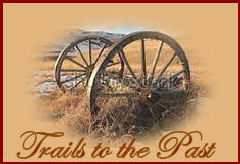|
Progressive Men
Index
 CHARLES SUMNER CAIRNS is a lawyer practicing
his profession at Minneapolis. His ancestors on both
sides of the family came to America from Great Britain
before the Revolutionary war. His father’s name was
Robert Cairns and his mother’s maiden name was Mary A.
Haynes, one of whose paternal ancestors was Samuel
Haynes, one of the nine founders of Portsmouth, New
Hampshire.
He came from England in 1635 in the ship “Angel
Gabriel.” CHARLES SUMNER CAIRNS is a lawyer practicing
his profession at Minneapolis. His ancestors on both
sides of the family came to America from Great Britain
before the Revolutionary war. His father’s name was
Robert Cairns and his mother’s maiden name was Mary A.
Haynes, one of whose paternal ancestors was Samuel
Haynes, one of the nine founders of Portsmouth, New
Hampshire.
He came from England in 1635 in the ship “Angel
Gabriel.”
Charles Sumner Cairns was born July 4, 1856, on a
farm near Duncan Falls, Muskingum County, Ohio. His
early education was obtained in the common schools of
that county, after which he entered Muskingum College,
at New Concord, Ohio, where he graduated in a classical
course in 1876. He took a law course in the University
of Michigan, graduating in 1882, and for some time
thereafter he continued to read law in the office of
Roby, Outten & Vail, at Decatur, Illinois. In 1883
he came to Minneapolis and opened a law office with D.
S.
Frackelton. After the dissolution of that
partnership he continued business by himself until 1895,
when he entered the firm of Fletcher, Cairns &
Rockwood.
Mr. Cairns is a Republican and takes an active
interest in local and state politics. He was elected to
the lower house of the state legislature and served in
the session of 1893. He also has served the Republicans
as a member of campaign committees and has taken a
leading part in the management of public affairs in his
own city. When the state census of 1895 was taken Mr.
Cairns was made chairman of the citizens’ committee,
appointed to look after the interests of the city in
that connection, and performed the duties imposed upon
him with such success as to meet with the hearty
approval and commendation of his fellow citizens. Mr.
Cairns is a man of high character and his appointment at
the head of that committee was a guarantee that the work
would be done fairly and honestly. At the same time it
was prosecuted with vigor and intelligence, and it is
due to his efforts that the census of 1895 was regarded
as the most reliable ever taken in the city. He is a
member and first vice president of the Union League, a
member of the Board of Trade and also of the Commercial
Club. His church membership is with Westminster
Presbyterian church, of which society he is one of the
deacons. His wife is a daughter of Isaac Shellabarger,
of Decatur, Illinois, to whom he was married October 30,
1884. Her maiden name was Frances V.
Shellabarger.
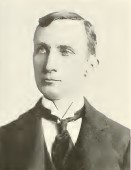 JOHN
FRANK CALDERWOOD As city comptroller, auditor of the
Twin City Rapid Transit Company, president of the
Commercial Club, and a leader of the younger businessmen
of the city, J. F. Calderwood has become, during the
past eight or ten years, one of the best known men in
Minneapolis. JOHN
FRANK CALDERWOOD As city comptroller, auditor of the
Twin City Rapid Transit Company, president of the
Commercial Club, and a leader of the younger businessmen
of the city, J. F. Calderwood has become, during the
past eight or ten years, one of the best known men in
Minneapolis.
Mr. Calderwood was born in the town
of Redford, near Detroit, Michigan, on May 27, 1859. His
father, H. N. Calderwood, is a native of Scotland and
was born and spent his boyhood days at Calderwoods Glen,
forty miles from Edinburgh. He came to this country when
fourteen years of age, and lived with his parents until
his marriage, when he moved to Michigan. His wife was
Miss Ellen Van Vaulkenburg, a native of Herkimer County,
New York. They were married on March 18, 1855. Mrs.
Calderwood died on February 20, 1896. Mr. Calderwood
followed farming in Michigan until his son John, was ten
years of age, when he moved to Fenton, Genesee County,
Michigan, where he still resides.
John was the only child. He
received his education at the public and high schools of
Fenton, graduating from the latter institution on June
25, 1877. He was admitted to the University of Michigan
but did not enter. For two years he taught a district
school in northern Michigan, in the locality where nerve
rather than education was the first element of success.
Subsequently he taught in the normal schools of Indiana
for one year. But teaching did not suit Mr. Calderwood,
as his natural bent was for business, and he went to Bay
City to find some employment along the lines of his
ambition. His first position was that of office boy with
the lumber firm of T. H. McGraw & Co. With this
house the young man had a chance to develop his
abilities, and was so successful that before he was
twenty-one years old he had become head bookkeeper for
the firm, but with characteristic enthusiasm he
overworked, and failing health led him to come to
Minnesota.
Upon his arrival in Minneapolis in
October, 1881, he secured a position as head bookkeeper
and credit man with the carpet house of Folds &
Griffith. Seven years of continuous service with this
firm were only ended by Mr. Calderwood’s election in
November, 1888, to the office of City Comptroller of
Minneapolis. Mr. Calderwood brought to this position a
thorough business experience and a mind admirably
adapted to finance. It was something of a novelty for
anyone but an active politician to seek such an
office. But though the young
man, previous to his nomination, was comparatively
unknown, Mr. Calderwood’s canvass was so energetic and
his qualities were so generally recognized, that he
received a larger majority than any other candidate on
the Republican ticket. In this campaign he displayed an
excellent executive ability, which did much to aid in
his election. Upon taking the duties of his office Mr.
Calderwood at once made himself felt as a positive and
aggressive factor in the city government. Under his
administration the office of Comptroller became, not
that of a bookkeeper, but rather that of financial
adviser and director of the municipality. This sort of
thing met with scant favor from politicians who were in
office for emoluments only, but it made Mr. Calderwood
immensely popular in the city. He was renominated in
1890 without opposition, but the municipal elections
being complicated with the national and state elections
held at the same time, all Republican candidates for
city offices were defeated in the general Democratic
“land slide” of that fall.
Shortly after the close of his
official term, Mr. Calderwood was offered the position
of auditor of the Minneapolis Street Railway Company. In
this position he has been remarkably successful. Its
duties have been of the most engrossing nature, and,
with his customary self-forget fulness, Mr. Calderwood
has frequently devoted double the usual business hours
to the interests of the corporation. At the same time he
has taken an active interest in the affairs of the city.
He was one of the organizers of the Minneapolis
Commercial Club, and for three years past has been its
president. To his energy, influence and wise direction
must be attributed the larger part of its success. Mr.
Calderwood, with his wife and daughter, reside at the
West Hotel in Minneapolis.
 JOHN
FRANKLIN CALHOUN a prominent broker of Minneapolis,
comes of a very ancient Scotch family The name of the
original family in Scotland was spelled Colquhoun. The
ancient family home was on the shores of Loch Lomond.
The family possessions in Scotland date back to the time
of Alexander II. of Scotland, in the Twelfth century,
but the family is of much more ancient origin. Mr.
Calhoun’s great grandfather, David Calhoun, occupied a
homestead of four hundred and twenty acres, which was a
part of Braddock’s battlefield, near Pittsburgh, and is
now a part of Homestead, Pennsylvania. David Calhoun
served in the war of the Revolution. He was a member of
Captain James Rogers’ militia company, and of Colonel
Timothy Greene’s Hanover rifle battalion.
During the Revolution he participated in many
notable engagements, including the battle of Brandywine,
the battle of Camden and the battle of Guilford Court
House. He saw Lord Cornwallis deliver up his sword at
Yorktown. When the war of 1812
broke out Mr. Calhoun, though then fifty-five years of
age, enlisted with the Pennsylvania Volunteers under
General Richard Crooks. On his mother’s side, Mr.
Calhoun also comes of Revolutionary stock.
His mother’s mother, Orpha Bingham, was the only
daughter of Chester Bingham, who served in the
Revolutionary war. Mr. Bingham was a descendant of
Deacon Thomas Bingham, of Norwich, Connecticut, who
married Mary Rudd on December 12, 1666. The wedding
ceremony was performed by Governor John Winthrop, on the
banks of a little rivulet, on the boundary line between
Massachusetts and Connecticut, which was afterwards
called Bride’s Brook. The story of Bride’s Brook became
a matter of history, and it is said, in legal authority,
has established the boundary line between the two
states. The Bingham family is traced back for twenty
generations, and is supposed to have been of Saxon
origin. JOHN
FRANKLIN CALHOUN a prominent broker of Minneapolis,
comes of a very ancient Scotch family The name of the
original family in Scotland was spelled Colquhoun. The
ancient family home was on the shores of Loch Lomond.
The family possessions in Scotland date back to the time
of Alexander II. of Scotland, in the Twelfth century,
but the family is of much more ancient origin. Mr.
Calhoun’s great grandfather, David Calhoun, occupied a
homestead of four hundred and twenty acres, which was a
part of Braddock’s battlefield, near Pittsburgh, and is
now a part of Homestead, Pennsylvania. David Calhoun
served in the war of the Revolution. He was a member of
Captain James Rogers’ militia company, and of Colonel
Timothy Greene’s Hanover rifle battalion.
During the Revolution he participated in many
notable engagements, including the battle of Brandywine,
the battle of Camden and the battle of Guilford Court
House. He saw Lord Cornwallis deliver up his sword at
Yorktown. When the war of 1812
broke out Mr. Calhoun, though then fifty-five years of
age, enlisted with the Pennsylvania Volunteers under
General Richard Crooks. On his mother’s side, Mr.
Calhoun also comes of Revolutionary stock.
His mother’s mother, Orpha Bingham, was the only
daughter of Chester Bingham, who served in the
Revolutionary war. Mr. Bingham was a descendant of
Deacon Thomas Bingham, of Norwich, Connecticut, who
married Mary Rudd on December 12, 1666. The wedding
ceremony was performed by Governor John Winthrop, on the
banks of a little rivulet, on the boundary line between
Massachusetts and Connecticut, which was afterwards
called Bride’s Brook. The story of Bride’s Brook became
a matter of history, and it is said, in legal authority,
has established the boundary line between the two
states. The Bingham family is traced back for twenty
generations, and is supposed to have been of Saxon
origin.
J. F. Calhoun is the son of David
and Caroline Calhoun. He was born in Licking County,
Ohio, on April 28, 1854. While he was still a small
child his parents removed to Illinois, and the only
schooling which he ever received was obtained at a
little schoolhouse in Mercer County of that state. At
the age of thirteen he left his home and went to the
neighboring village of Keithsburgh, to which he walked
barefooted with a straw hat on his head and not a cent
in his pocket. After repeated applications for work he
at last obtained employment as a printer’s “devil” in
the office of Theodore Glancey, publisher of the
Keithsburgh Observer. This situation, which furnished
him an income of three and one-half dollars a week, was
broken up after a very few days, when the paper went
into the hands of the sheriff. Young Calhoun next got
employment in a carpenter shop, where he was employed in
turning a grind stone, and remained in this position for
eight months. He then went into a clothing store, and
after a while obtained a better position in a large dry
goods house, where he worked for eight years. When he
left this position it was to engage in the mercantile
business on his own account.
In
1881 Mr. Calhoun moved to Minneapolis and engaged in
loaning money on real estate. During the past fifteen
years he has done a large business, both in buying and
selling Minneapolis and Northwestern property and
placing loans for Eastern clients. He has been
identified with many of the enterprises of the city, and
has taken a prominent place among the businessmen in his
line. Mr. Calhoun was a member
of the first Chamber of Commerce of Minneapolis. Since
1885 he has been a member of the Minneapolis Club and he
has been a member of the Commercial Club since its
organization. In the Masonic body he has been prominent,
taking all of the degrees, including the Thirty-third,
and last degree.
He
was married on January 20, 1879 at Galesburg, Illinois,
to Miss Clara Zenora Edwards, daughter of the Hon. John
Edwards, who was a member of the first Indiana
legislature. They have three children, John Edwards,
Frederic David and Beatrice Zenora.
 THOMAS CANTY is associate
justice of the Supreme Court of Minnesota, and a notable
example of a self-made man. Thomas Canty is of Irish
ancestry. His parents were Jeremiah Canty and Anna
Stanton (Canty). They were both born in the county of
Kerry, Ireland, but met and married in London. Thomas
Canty, father of Jeremiah, was a well-to-do farmer fifty
years ago, but somewhat extravagant, and during the
famine of 1848 he became impoverished. The family
scattered and Jeremiah left for London in search of his
fortune. Thomas, the subject of this sketch, was born in
London, April 24, 1854, and came to America with his
parents when but two years of age. His father was a
laborer and settled first at Detroit, Michigan, then
removed to Lodi, Wisconsin, to Clayton County, Iowa, and
finally purchased a farm near Monona, Iowa, where he
died when Thomas, his eldest son, was twenty years of
age, leaving a widow and seven children. THOMAS CANTY is associate
justice of the Supreme Court of Minnesota, and a notable
example of a self-made man. Thomas Canty is of Irish
ancestry. His parents were Jeremiah Canty and Anna
Stanton (Canty). They were both born in the county of
Kerry, Ireland, but met and married in London. Thomas
Canty, father of Jeremiah, was a well-to-do farmer fifty
years ago, but somewhat extravagant, and during the
famine of 1848 he became impoverished. The family
scattered and Jeremiah left for London in search of his
fortune. Thomas, the subject of this sketch, was born in
London, April 24, 1854, and came to America with his
parents when but two years of age. His father was a
laborer and settled first at Detroit, Michigan, then
removed to Lodi, Wisconsin, to Clayton County, Iowa, and
finally purchased a farm near Monona, Iowa, where he
died when Thomas, his eldest son, was twenty years of
age, leaving a widow and seven children.
Thomas attended school regularly
until he was nine years of age, and was a very apt
pupil. After that he was only able to attend school a
few months each winter. The teachers were generally
incompetent, but Thomas was ambitious and pursued his
studies with great success, and with a preference for
mathematics. In the spring of 1869, at the age of
fifteen, he passed the examination and received a first
grade certificate to teach school in Clayton County,
Iowa. When he was but thirteen a dispute arose with
regard to the rent his father should pay for the farm he
occupied and it was agreed that the farm should be
surveyed. Thomas found an error in the surveyor’s
figures, walked fourteen miles through a snow storm to
the house of the surveyor, had the error corrected,
saved his father sixty dollars, and prevented a law
suit. His mother wanted him to be a blacksmith and
insisted that he learn some trade. He was determined to
be a lawyer. In 1872 he went South determined to find a
suitable position as teacher and landed penniless and
friendless at Carbondale, Illinois, where he worked
sixteen hours a day driving a mule used in pulling
buckets out of a coal shaft. In this way he earned money
enough to take him to Texas. There he taught school for
four years, in the meantime applying himself diligently
to his studies, and although unable to take a college
course, he thus acquired substantially the same
advancement which a college training would have given
him. In the meantime his physical strength had been
exhausted, his father had died and he went back to the
Iowa farm to regain his health and help his mother take
care of the family. He remained on the farm two years
devoting all his spare time to the study of law. Owing
to crop failures debts had accumulated which he assumed.
He defeated a graduate of Harvard and another of the
University of Wisconsin for a position as principal of a
high school, took his earnings and paid a thousand
dollars of his debt and got an extension of time on the
balance.
In
the spring of 1880 he went to Grand Forks, Dakota, to
practice law, but, not satisfied with the outlook, he
returned October 1, of the same year, to Minneapolis,
and entered the law office of Seagrave Smith and was
admitted to the bar the following February. He was so
poor that he was obliged to board himself, but his
indomitable will carried him through. His first case was
a contest over the title to a tract of land near Lake
Minnetonka which had been lost by two prominent
attorneys, but he took up a new line of defense and won
his case. Another notable series
of cases was that of the employees of the contractors
engaged in opening Sixth avenue North. In this case he
had arrayed against him fourteen able lawyers, but Mr.
Canty won every case. He defended the appeals to the
district court and again in the supreme court, but he
was successful in every instance. At the time of the
street car strike in 1889 he won distinction and popular
applause by his successful resistance of the action of
the municipal court in sentencing men to the work house
whom he claimed were in no way connected with the
strike. He took the men under sentence out of jail on
writs of habeas corpus, carried their cases to the
district court, argued them before Judge Smith and
secured their release.
Judge Canty was a Republican until
recent years and aggressive in his defense of Republican
principles, but the developments during Grant’s second
term cooled his enthusiasm considerably.
His first vote was cast for the Hayes electors,
but he never approved of the decision of the electoral
commission, doubted Hayes’ election and was particularly
displeased with the action of the commission in refusing
to go thoroughly into the evidence. He continued to vote
the Republican ticket, however, on state and national
matters until the passage of the McKinley bill. In local
politics he was always independent.
In the fall of 1890 Mr. Canty was nominated by
the Democratic party for judge of the district court in
Hennepin County. Up to that time he had never been a
candidate for or held any public office. He was elected
and held that office for three years. On July 14, 1892,
he was nominated for associate justice of the Supreme
Court by the People’s Party of Minnesota, and was also
nominated for the same office by the democratic party on
the next third day of August, and was elected. He
entered upon the discharge of his duties in that
enviable and honorable position the first of January,
1894. His record on the
district bench was that of a careful, painstaking, able
jurist, and since his elevation to the higher office of
the supreme bench he has sustained himself in that
regard and justified the highest expectations of his
friends. Judge Canty is a member of the Order of Odd
Fellows, is a thirty-second degree Mason and a Shriner.
He has never
married.
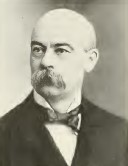 FRANK HENRY
CARLETON is a lawyer in Minneapolis, a member of the
firm of Cross, Hicks, Carleton & Cross. He was born
October 8, 1849, at Newport, N. H. His ancestry on his
father’s side was English, and the family line is traced
back to Sir Guy Carleton. On his mother’s side his
descent is also from English stock, going back to Joseph
French, a leading citizen of Salisbury, Mass., of a
generation prior to the War of the Revolution. FRANK HENRY
CARLETON is a lawyer in Minneapolis, a member of the
firm of Cross, Hicks, Carleton & Cross. He was born
October 8, 1849, at Newport, N. H. His ancestry on his
father’s side was English, and the family line is traced
back to Sir Guy Carleton. On his mother’s side his
descent is also from English stock, going back to Joseph
French, a leading citizen of Salisbury, Mass., of a
generation prior to the War of the Revolution.
Frank Henry is the son of Henry G.
Carleton, now and for many years president of the
Savings Bank at Newport, N. H. For forty years he was
one of the editors of the New Hampshire Argus and
Spectator. He was for many years one of the leading
Democratic editors of New Hampshire, and a personal
friend of John P. Hale and Franklin Pierce. He has now
retired from active business and is in good financial
circumstances. He has served as a member of the
legislature of the State of New Hampshire, has been
register of probate, and has filled other important
public positions.
The
subject of this sketch was educated in the common
schools of Newport, and prepared for college at Kimball
Union Academy, at Meriden, New Hampshire, where he
graduated in June, 1868. He then entered Dartmouth
College and completed the course there with the class of
1872. He took the first prize for English composition
during the senior year and wrote the class ode for
Commencement Day. During his academic and college days
he was obliged to absent himself at different times
while he was engaged as a teacher, and in 1870 he was
for a time principal of an academy for white pupils in
Mississippi. Mr. Carleton also
varied his experience by assuming the duties of city
editor of the Manchester Daily Union, after his
graduation from college, which position he held for
several months.
He
then decided to carry out an early plan to seek a
location in the West and accordingly came to Minneapolis
where he was engaged as a reporter for the Minneapolis
News, then edited by George K. Shaw. This position he
held for several months at the same time serving as
Minneapolis correspondent for the St.
Paul Press. Subsequently he was appointed city
editor of the St. Paul Daily Press under Mr.
Wheelock. After a year’s service on the St. Paul
Press, Mr. Carleton determined to carry out his original
plan of preparing for the practice of law and
accordingly commenced his study for that purpose in the
office of Cushman K. Davis and C. D. O’Brien. While
pursuing his studies he served as clerk of the municipal
court of St. Paul, and after
holding this position for five years he resigned owing
to ill-health and took a six months’ trip to Europe. On
his return from Europe he was appointed secretary of
Governor John S. Pillsbury, and rendered important
services in connection with the settlement of the
repudiated Minnesota railroad bonds. For several years
he was the Minnesota correspondent of the Chicago
Inter-Ocean and the New York Times.
In
1882 he removed to Minneapolis and formed a legal
partnership with Judge Henry G.
Hicks and Capt. Judson N. Cross. These legal
relations still exist, the only change being the
addition of Norton M. Cross, the son of Capt.
Cross. From 1883 to 1887 Mr.
Carleton was assistant city attorney of Minneapolis.
These were important times in the history of the city,
bringing into active operation the principle of the
“patrol limits,” and witnessing the inauguration of
important litigation in the interests of the city.
Mr. Carleton and the firm with which he is
connected has a large and varied practice in real estate
law, probate law and financial adjustments in which it
has had much experience. In politics he is a
Republican, although not an active participator in party
affairs, preferring to devote his leisure time to
scientific research and literary pursuits.
Mr.
Carleton is a Mason and a member and one of the trustees
of the Park Avenue Congregational Church, and is one of
the directors of the Minnesota Home Mission Society. In
1881 he was married to Ellen Jones, the only daughter of
the late Judge Edwin S. Jones, of Minneapolis.
They have had five children, Edwin Jones, Henry Guy,
George Pillsbury, Charles Pillsbury, who died in
infancy, and Frank H. Mr. Carleton is a lover of nature,
a great cultivator of flowers, an enthusiastic angler,
and much given to the pursuit of this fascinating sport
in the picturesque regions of this generally celebrated
fishing ground of northern Minnesota.
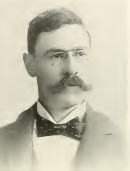 WILLIAM WYCKOFF CLARK comes of a
line of patriots who have a most honorable record in the
service of their country, one generation being
represented in the Army of the Revolution, another in
the War of 1812, a third in the War of the Rebellion.
Mr. Clark is a resident of St. Anthony Park, but has his
office in Minneapolis, and is engaged in the practice of
law in that city. WILLIAM WYCKOFF CLARK comes of a
line of patriots who have a most honorable record in the
service of their country, one generation being
represented in the Army of the Revolution, another in
the War of 1812, a third in the War of the Rebellion.
Mr. Clark is a resident of St. Anthony Park, but has his
office in Minneapolis, and is engaged in the practice of
law in that city.
His
father was a physician and practiced his profession in
Mankato from 1857 until his death in 1878. He came to
Minnesota from Ohio, and during the war was a surgeon of
the Tenth Minnesota regiment. Dr. Clark’s wife was
Adaline Babbett (Clark), a direct descendant of Edward
Winslow, one of the Mayflower Puritans.
The Clark family in America was descended from
James Clark, who was born in Ireland and emigrated from
there in 1750 and settled in Lancaster County,
Pennsylvania. One of his sons, John Clark, was a colonel
in the American Army of the Revolution, and his
commission, signed by Washington, is still preserved by
one of the family. It was his son who was
a soldier in the War of 1812 and who was the grandfather
of the subject of this sketch William Wyckoff was born
at Mankato, March 10, 1862.
He
graduated from the high school in that city in 1879, and
entered the state university the same year, where he
accomplished four years’ work in three, graduating in
the class of 1882. He received one of the class honors,
that of class tree orator, received the first prizes in
the oratorical contests in his junior and senior years,
and in the latter year represented Minnesota in the
inter-state oratorical contest at Indianapolis, taking
third place in the contest. While in college he was a
member of the Theta Phi fraternity, a local fraternity
now succeeded by Psi Upsilon. The first dollar Mr. Clark
ever earned was received for shoveling dirt at the
building of the waterworks in Mankato, but he soon
obtained better employment in the construction of a mill
then being erected there. Later he was employed with the
firm of Brackett, Chute & Co., on the construction
of the Canadian Pacific road, and subsequently held the
position of assistant bookkeeper for the hardware firm
of Miller Bros. He also had some experience as a
teacher, filling the unexpired term of a principal of a
public school at Sleepy Eye.
He
then settled in Minneapolis for the study of law, and
was admitted to the bar in 1885. He is a member of the
law firm of Clark & Wingate, with offices in the
Minnesota Loan & Trust Building, and at the present
time is giving his attention chiefly to the law business
of the Scottish American Mortgage Company, Limited, a
company having three or four millions of dollars
invested in this State. Mr. Clark has always
been a Republican, and although he has never asked for
any office he has spent several campaigns on the stump
in this state. He is a member of the Commercial Club,
the Royal Arcanum, and the Fraternal Mystic Circle.
He
was married in 1885 to Josephine Henry, daughter of an
old resident and hardware merchant in East Minneapolis.
They have two children, Wyckoff C. and Kenneth. In 1889
he removed to St. Anthony Park, a suburb of Minneapolis,
where he has a pleasant home.
 DAVID MARSTON CLOUGH
governor of Minnesota, furnishes a conspicuous example
of the self-made man. Born of humble parentage and
spending his youth in comparative poverty, contending
with the obstacles of life on the frontier, and without
the aid of influential friends, he has achieved the
position of highest honor in the state of his
adoption. DAVID MARSTON CLOUGH
governor of Minnesota, furnishes a conspicuous example
of the self-made man. Born of humble parentage and
spending his youth in comparative poverty, contending
with the obstacles of life on the frontier, and without
the aid of influential friends, he has achieved the
position of highest honor in the state of his
adoption.
He
was the son of Elbridge G. and Sarah Brown (Clough), of
Lyme, Grafton County, New Hampshire. He was the fourth
in a family of fourteen children, ten of whom grew to
maturity. He was born December 27, 1846, at Lyme, New
Hampshire, and when he was nine years old his family
moved to Waupaca, Wisconsin, arriving there on the
fourth of July, 1857: Within the next year they removed
to Spencer Brook, Isanti County, Minnesota, a little
settlement on the extreme frontier in the lumbering
region of Rum River. His father took a claim, a cabin
was built, a clearing made in the timber and the farm
started. In addition to work done on the farm, father
and sons engaged in the lumbering business in the employ
of companies then operating in that region. There was no
school to attend and the educational facilities of which
David was able to avail himself were of the most limited
kind. At sixteen he drove an ox team in the woods, and
at seventeen went on the logging drive and earned a
man’s wages. Subsequently he was
employed at the sawmills in Minneapolis in the summer
and continued to work either for his father, or for
wages for his father’s benefit until he was twenty.
At
this age it was his father’s custom to give his boys
their time, having no other endowment to bestow.
David then engaged himself by the month with H.
F. Brown, a lumberman, and continued for four years in
his employment, doing all kinds of work involved in the
lumber business. After leaving Mr. Brown he and his
brother Gilbert engaged in the lumbering business for
themselves. They lived at Spencer
Brook and took contracts for cutting and hauling logs in
the adjacent pineries. This they continued for two
years, when, in 1862, they removed to this city.
They continued in the logging business for
several years and then commenced the manufacture of
lumber, first hiring their logs sawed and later building
a mill of their own. Clough Brothers eventually became
one of the substantial lumber firms of Minneapolis,
owning their own timber, manufacturing it and cutting
it, their annual output in later years averaging fifteen
million feet. Gilbert Clough died
six years ago, since which time David has continued the
business alone.
He
also became president of the Bank of Minneapolis.
Although his father died years ago, Mr. Clough
has retained the homestead in Isanti County, and added
to it until it now embraces six hundred and forty acres
of land, on which Mr. Clough has a fine herd of
thoroughbred Short Horn Cattle, and his interest in
agriculture and stock raising was recognized in 1892 by
his election to the office of president of the State
Agricultural Society. To him belongs the
credit at the close of his administration of turning
over the society to his successor free of debt, the
first time in its history.
Mr. Clough has been active in local and state
politics, having served the Second ward of Minneapolis
as a member of the council from 1885 to 1888. In the
second year of his service he was made president of the
council. At this time he was also elected to represent
East Minneapolis, Isanti and Anoka counties in the state
senate, his term of office of four years expir ing in
1890. What is known as “the patrol limits system,” a
rule which confines the saloons to the business center
of the city, received Mr. Clough’s support in
the legislature and in the council, and to him credit is
given for having defeated an attempt in the legislature
to grant to the council the power of discontinuing or
altering this system. Mr. Clough was a member of the
state Republican central committee for four years, and
in 1892 was nominated by the Republicans for lieutenant
governor and was elected. He was re-nominated in
1894 and re-elected, and upon the election of Knute
Nelson to the United States senate in 1895 he succeeded
him in the office of governor. He was nominated by the
Republicans in 1896 to succeed himself and was elected.
When the court house and city hall commission was
organized in Minneapolis, Mr. Clough was made a member
of that commission, and for a time was its
president.
His
family are identified with the First Congregational
Church of Minneapolis, of which society Mr. Clough was
for many years trustee. He belongs to the Masonic order,
in which he has taken thirty-two degrees. Mr. Clough was
married April 4, 1867, to Addie Barton, at Spencer
Brook, Minnesota. He has one daughter, Nina, the wife of
R. H. Hartley, of
Minneapolis.
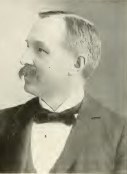 J. FRANK
CONKLIN has been prominently identified with the
dramatic stage in Minneapolis for a number of years, his
chief connection with that profession having been as
manager of the Grand Opera House during nearly the
entire time of its existence as a play house. J. FRANK
CONKLIN has been prominently identified with the
dramatic stage in Minneapolis for a number of years, his
chief connection with that profession having been as
manager of the Grand Opera House during nearly the
entire time of its existence as a play house.
Mr.
Conklin was born August 14, 1852, at Newburgh, New
York. His father James O.
Conklin, was a well-to-do farmer of Orange County. His
mother’s maiden name was Rebecca Purdy. His ancestry on
his father’s side were well-to-do farmers, and the line
is traced to prominent characters in the war of 1812. On
his mother’s side he is descended from a family of
merchants in New York City.
Mr.
Conklin was educated in the common schools of Orange
County, and at Sigler’s Newburgh Institute. In 1880 he
came West, locating in Minneapolis, where he became
assistant manager of the old Academy of Music. On the
completion of the Syndicate Block, of which the Grand
Opera was a part, Mr. Conklin was appointed manager of
the whole property, a position which he still holds,
although recently the Grand Opera House has been closed
as an amusement house.
Mr.
Conklin’s superior business qualifications have placed
him in charge of a large amount of property in
Minneapolis and St. Paul, including besides the
Syndicate Block, the Guaranty Loan building, Temple
Court and other important buildings in Minneapolis, and
the Lowry Arcade and Globe Building in St. Paul. Mr.
Conklin began his business career at the age of twenty.
His first year, for which he received the munificent sum
of fifty dollars and board, was spent in the produce
business in New York City. Later he opened a store in
New York on his own account, and also one in
Jacksonville, Florida. He had disposed of his business
prior to his removal to the West.
In
politics Mr. Conklin is a Republican, although he has
never sought any office or taken a very active part in
political affairs. He is a member of the Minneapolis
Club. On September 11, 1878, he was married to Miss
Lizzie Merritt of Marlborough, New York. They have four
children, Margaretta B., Clara llsamine, J. Frank, Jr.,
and Edwin Herrick.
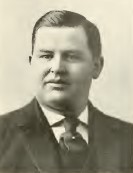 EDWARD JAMES CONROY
The chairman of the board of county commissioners of
Hennepin County, Minnesota, is Edward James Conroy, who
is a resident of Minneapolis.
Mr. Conroy was born in Oshkosh, Wisconsin,
November 15, 1864, the son of Thomas and Margaret
Conroy, both of whom were born in Dublin, Ireland. They
emigrated to this country in 1854, settling at Oshkosh,
Wisconsin. Thomas Conroy was a
carpenter by trade, and he followed this occupation in
Oshkosh, becoming fairly prosperous. EDWARD JAMES CONROY
The chairman of the board of county commissioners of
Hennepin County, Minnesota, is Edward James Conroy, who
is a resident of Minneapolis.
Mr. Conroy was born in Oshkosh, Wisconsin,
November 15, 1864, the son of Thomas and Margaret
Conroy, both of whom were born in Dublin, Ireland. They
emigrated to this country in 1854, settling at Oshkosh,
Wisconsin. Thomas Conroy was a
carpenter by trade, and he followed this occupation in
Oshkosh, becoming fairly prosperous.
Edward received but a common school
education in the public schools of Oshkosh, which was
supplemented by a three months’ course in a commercial
college. From the time he was able to work
young Conroy tried to be of assistance to his
family. He earned his first dollar as a lather, at which
he became an expert, and which line of work he followed
during his school vacations. When only seventeen years
of age he left home and removed to Minnesota, locating
in Minneapolis. Here he learned the plasterer’s trade,
at which trade he worked for the next two years,
acquiring a general knowledge of the business of a
master mason and contractor.
In 1883 he commenced in business on his own
account as a contractor of mason work, which he has
followed ever since. From the first he was successful in
obtaining remunerative contracts, and many down town
blocks and homes in Minneapolis attest to his skill and
enterprise.
Mr.
Conroy has always affiliated with the Democratic party,
and has been an active participator in the affairs of
his city for the past ten years. In 1888 the Democrats
of the Second ward nominated him for the office of
alderman, but he was defeated. In 1891 he was chosen as
assistant sergeant-at-arms in the upper house of the
state legislature. The following year he was a nominee
on the Democratic ticket for county commissioner in the
First District of Hennepin County, and elected for a
term of four years. In his short period of service as a
county commissioner, Mr. Conroy has earned for himself
an enviable reputation as a man of sterling honesty,
integrity and uprightness in handling public business.
He
was so well liked by his associates on the board that,
notwithstanding a Republican majority, he was elected to
the chairmanship, which he maintained during the four
years of his term with dignity and impartiality. He was
reelected to the same office in 1896 by a large
majority. In the campaign of
1894 he was chairman of the Democratic county committee,
also of the Democratic campaign committee. Mr. Conroy
has also served on the board of tax levy for four years,
being one of the most efficient members of that board.
Aside from the duties of his public office, Mr. Conroy
has been identified to a considerable extent with the
real estate and building interests of Minneapolis, and
his success thus far in life gives promise of still
better results in the future.
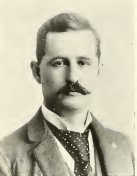 CLAYTON R. COULEY
Mr. Cooley’s father, Warren Cooley, was by trade a
mechanic, and worked at this occupation during his
life-time, attaining a moderate competence, his native
state was Massachusetts: he was born at Palma, in 1820,
and died in Minneapolis, in 1887. His wife, the mother
of the subject of this sketch, survives him. Her maiden
name was Eleanor F. Morris she was born in Alton,
Illinois, in 1833. CLAYTON R. COULEY
Mr. Cooley’s father, Warren Cooley, was by trade a
mechanic, and worked at this occupation during his
life-time, attaining a moderate competence, his native
state was Massachusetts: he was born at Palma, in 1820,
and died in Minneapolis, in 1887. His wife, the mother
of the subject of this sketch, survives him. Her maiden
name was Eleanor F. Morris she was born in Alton,
Illinois, in 1833.
Their son Clayton was born in
Houston County, Minnesota, October 16, 1859, and shortly
after his birth they migrated from this state to Iowa,
first locating at Dubuque, afterwards at Calls and
Eldora, in the same state, the boy receiving his
education in the public schools of the latter town. The
first dollar Clayton ever earned was as a lad, working
in Burt’s novelty factory in East Dubuque. The first
permanent business engagement he secured after leaving
school was in a drug store at Eldora.
He quit this business, however, after a short
time and took a position in an abstract and loan office
in the same city. He held this position until February,
1884 at which time he located in Minneapolis. He first
secured employment with Geo. W. Chowan & Co., but
subsequently entered the office of Merrill & Albee,
an abstract firm. In September, 1886,
Mr. Cooley acquired Mr. Merrills interest in
the firm, and the business has since that time been
conducted under the name of Albee & Cooley. In
politics Mr. Cooley is a Republican, his first vote
having been cast for James A. Garfield. He took an
active part in local politics, and was rewarded for his
services in 1892 by being nominated for the office of
county auditor of Hennepin County, and was elected. He
was re-elected to the same office in 1894 his term
expiring January 1, 1897. Mr.
Cooley has been one of the most capable men that
has ever occupied this office, and he is held in high
esteem by all who know him.
Though he took a course in the law
department of the University of Minnesota, graduating in
1893 it was not with the intention of devoting himself
to the practice of law but rather as an aid to him in
his private business, to which he is now devoting all
his time, having been released from public duties by
expiration of his second term as auditor. He is a
prominent Mason, a member of the Knights of Pythias, the
Roval Arcanum, and the Ancient Order of United Workmen,
also of the Minneapolis Commercial
Club.
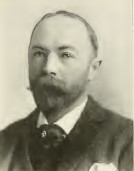 EGBERT COWLES
banker, cashier of the Flour City National Bank, is the
son of Lucius S. Cowles, a wholesale
dry goods merchant of Galena and Freeport, Illinois.
Lucius Cowles was born in Farmington, Connecticut. The
Cowles family were of English origin, and settled in
Farmington in 1647. They were land owners and farmers,
raisers of fine stock, and in the present century
engaged in journalism and other professions.
Judge Alfred Cowles, a member of this family, was
one of the early settlers of Illinois, having taken up
his residence at Kaskaskia as early as 1823. He
afterwards, at the age of sixty-six years, made a trip
across the plains and mountains, arriving in San
Francisco, California, in 1852. In 1864 he went to San
Diego, where he remained until the time of his death, in
1887. He lived to the
advanced age of one hundred years, four months and ten
days. His cousin, Alfred Cowles. was one of the owners
and managers of the Chicago Tribune for many years
before his death, and Edwin Cowles was principal owner
of the Cleveland Leader for upwards of twenty years. Mr.
Cowles’ ancestry on his mother’s side were New England
people, prominent in the legal profession and in
national politics. Her name was Louise S. Whitman, and
she was a native of Farmington, where she was
married. EGBERT COWLES
banker, cashier of the Flour City National Bank, is the
son of Lucius S. Cowles, a wholesale
dry goods merchant of Galena and Freeport, Illinois.
Lucius Cowles was born in Farmington, Connecticut. The
Cowles family were of English origin, and settled in
Farmington in 1647. They were land owners and farmers,
raisers of fine stock, and in the present century
engaged in journalism and other professions.
Judge Alfred Cowles, a member of this family, was
one of the early settlers of Illinois, having taken up
his residence at Kaskaskia as early as 1823. He
afterwards, at the age of sixty-six years, made a trip
across the plains and mountains, arriving in San
Francisco, California, in 1852. In 1864 he went to San
Diego, where he remained until the time of his death, in
1887. He lived to the
advanced age of one hundred years, four months and ten
days. His cousin, Alfred Cowles. was one of the owners
and managers of the Chicago Tribune for many years
before his death, and Edwin Cowles was principal owner
of the Cleveland Leader for upwards of twenty years. Mr.
Cowles’ ancestry on his mother’s side were New England
people, prominent in the legal profession and in
national politics. Her name was Louise S. Whitman, and
she was a native of Farmington, where she was
married.
Egbert Cowles was born in Galena,
Illinois, January 1, 1858, and removed with his father’s
family to Freeport in 1860. He attended the Freeport
public schools, and was graduated by the high schools of
that city, but never entered college.
He earned his first dollar by unloading a car of
crockery at Freeport when sixteen years of age, and took
a great deal of satisfaction in the accomplishment.
In 1872 he went to Chicago, where he secured a
position as messenger for the Commercial National Bank.
He continued with that institution until 1880, when he
traveled for two years in the Southern states on account
of his health. In 1882 he obtained the position of
discount clerk with the Merchants’ Loan and Trust
Company, of Chicago, and he continued in that position
until 1884. He then came to Minneapolis, where he
assisted in the organization of the Scandia Bank that
year, and remained with that institution until May,
1886, when he was appointed assignee of the Bank of
North Minneapolis. He settled up the
affairs of that bank, paying in full in four months, and
was appointed cashier of the German-American Bank of
Minneapolis in December, 1886, and remained in that
position until August, 1894. At that time he was engaged
as manager of the Flour City National Bank of
Minneapolis, and in January, 1895, was elected its
cashier.
Mr.
Cowles is a member of the Minneapolis Club and an
attendant at the First Unitarian church. He is not
married. Politically he claims no party affiliations,
preferring to work and vote for the best man and the
best cause, regardless of party
lines.
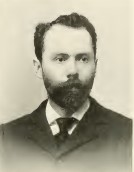 LEO MEVILLE CRAFTS
Among the pioneers of Minnesota was the late Major Amasa
Crafts, who settled in Minneapolis in 1853. Major Crafts
was an officer in the Maine troops during the Mexican
War, but was never called into active service. At the
outbreak of the Rebellion his health had become so
impaired that he was incapacitated for active service in
the cause of the Union, although it was his strong
desire to offer himself in his country’s service at that
time. Major Crafts’ family is traceable on his mother’s
side to the early settlement of Cambridge,
Massachusetts, where Simon Stone located on the banks of
the Charles River in 1635. The land occupied by him is
now incorporated in beautiful Mount Auburn Cemetery; but
it remained as the family estate for over two hundred
years. It was known as “Sweet Auburn,” and the broad
sweep of lawn overlooking the river was surmounted by a
spacious colonial mansion. One of Simon Stone’s sons was
among the earliest graduates of Harvard, and various
members of the family have occupied prominent positions
in Massachusetts. The Crafts family is also one of the
oldest in New England, having settled in Boston in 1630,
the year of the founding of the city. A branch of this
family still lives on the ancestral estate. When Major
Amasa Crafts, one of the founders and builders of the
city of Minneapolis, located in Minnesota, he engaged in
the lumbering business and in wholesale pork packing,
and also acquired large real estate interests, which,
with the development of the city, became very valuable.
The family residence. erected in 1857 and
the first brick house in the city, once stood on the
present site of the Century building, corner of Fourth
street and First avenue south, and at the time of its
construction was regarded as quite a pretentious
establishment. Major Crafts’ wife was
Mary Jane Henry (Crafts), who was also a native of
Maine. Her male ancestors were chiefly seafaring men at
the time when this country had a merchant marine of
importance. LEO MEVILLE CRAFTS
Among the pioneers of Minnesota was the late Major Amasa
Crafts, who settled in Minneapolis in 1853. Major Crafts
was an officer in the Maine troops during the Mexican
War, but was never called into active service. At the
outbreak of the Rebellion his health had become so
impaired that he was incapacitated for active service in
the cause of the Union, although it was his strong
desire to offer himself in his country’s service at that
time. Major Crafts’ family is traceable on his mother’s
side to the early settlement of Cambridge,
Massachusetts, where Simon Stone located on the banks of
the Charles River in 1635. The land occupied by him is
now incorporated in beautiful Mount Auburn Cemetery; but
it remained as the family estate for over two hundred
years. It was known as “Sweet Auburn,” and the broad
sweep of lawn overlooking the river was surmounted by a
spacious colonial mansion. One of Simon Stone’s sons was
among the earliest graduates of Harvard, and various
members of the family have occupied prominent positions
in Massachusetts. The Crafts family is also one of the
oldest in New England, having settled in Boston in 1630,
the year of the founding of the city. A branch of this
family still lives on the ancestral estate. When Major
Amasa Crafts, one of the founders and builders of the
city of Minneapolis, located in Minnesota, he engaged in
the lumbering business and in wholesale pork packing,
and also acquired large real estate interests, which,
with the development of the city, became very valuable.
The family residence. erected in 1857 and
the first brick house in the city, once stood on the
present site of the Century building, corner of Fourth
street and First avenue south, and at the time of its
construction was regarded as quite a pretentious
establishment. Major Crafts’ wife was
Mary Jane Henry (Crafts), who was also a native of
Maine. Her male ancestors were chiefly seafaring men at
the time when this country had a merchant marine of
importance.
The
subject of this sketch was born in Minneapolis, October
3, 1863. He attended the public schools and entered the
University of Minnesota. from which he was
graduated in 1886. He represented his class in the home
oratorical contest in his senior year. During the last
two years he was leader of his class in college work,
and in recognition of his standing was appointed one of
the commencement orators. He gave considerable attention
to gymnasium exercises and took the championship in
general athletics. Mr. Crafts was urged to enter the
ministry by President Northrop, of the University of
Minnesota, and also by the president of Dartmouth
College, but having chosen medicine for his profession
he adhered to his original purpose, and prepared himself
at Harvard, taking the four year course, then optional,
leading his class on the final examinations, and winning
the degree of A. M. by the work attained.
Subsequently, he received successive
hospital appointments at the Boston City Hospital, and,
being entitled by his competitive examinations to first
choice, was afforded the best opportunities for the
study of nervous diseases. In 1891 he was elected a
member of the Hospital Club, and was received into
fellowship in the Massachusetts Medical Society. During
the summer of 1891 he took charge of the practice of one
of the leading physicians of Boston, in his temporary
absence, but in September returned to Minnesota, and has
been engaged in practice in Minneapolis ever since.
Dr.
Crafts has contributed quite extensively to medical
publications, chiefly in the line of his specialty. He
holds the chair of nervous diseases in the medical
department of Hamline University, and has been visiting
neurologist to the Minneapolis City Hospital since 1894;
also to the Good Samaritan Free Dispensary. He is a
member of the board of directors of the Good Samaritan
Hospital and Dispensary Association and secretary of the
visiting staff; is treasurer of the Hennepin County
Medical Society: treasurer of the Minneapolis Branch of
the Western Society for the Suppression of Mice, a
member of the American Medical Association; of the
American Academy of Political and Social Science; a
fellow of the Massachusetts Medical Society; a member of
the Minnesota State Medical Society; a member of the
Hennepin County Medical Society; a member of the Harvard
Medical Alumni Association; a member of the Boston City
Hospital Club, the Minnesota Congregational Club and of
the Minneapolis Board of Trade. Dr. Crafts has always
taken an active interest in Sunday school work, and in
1892 was elected a member of the central committee of
the State Sunday School Association. In 1893 he was
chosen president, and re-elected in 1894 and 1895, and
is now member of the board of directors. He is president
of the Minneapolis Sunday School Officers’ Association,
and in 1893 started, and for a year edited, the
Minnesota Sunday School Herald, organ of the state
association, but now merged into the International
Evangel, published at St. Louis.
Dr. Crafts is a Republican in politics, but has
never taken a very active part in political
affairs. His church membership
is with the First Congregational Church of Minneapolis.
He is not married.
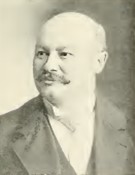 PETER BELA
CRANE, of Minneapolis, was born in Wisconsin, March 6,
1847. His father, V. G. Crane, had shortly before that
removed from New York to Wisconsin. He was a mechanic
and a farmer in reduced circumstances, his lack of means
being due to prolonged illness.
E. F. Crane, a brother of the father of the
subject of this sketch, is a Baptist minister, now over
ninety years of age, who is said to have baptized over
three thousand people. PETER BELA
CRANE, of Minneapolis, was born in Wisconsin, March 6,
1847. His father, V. G. Crane, had shortly before that
removed from New York to Wisconsin. He was a mechanic
and a farmer in reduced circumstances, his lack of means
being due to prolonged illness.
E. F. Crane, a brother of the father of the
subject of this sketch, is a Baptist minister, now over
ninety years of age, who is said to have baptized over
three thousand people.
The
subject of this sketch attended the district school,
which in the early days of Wisconsin was comparatively a
primitive affair. His attendance, however, was confined
chiefly to the winter months, his services, as in the
case of most farmers’ boys, being required on the farm
in the summer. In the spring of 1869. Peter Bela Crane
came to Minnesota in a covered wagon and settled on a
farm near Montevideo. He has had quite a varied career,
having been engaged in farming, in selling farm
machinery, and as a fire and life insurance agent. In
1874 he was appointed the agent of the St. Paul Fire and
Marine and the Minnesota Farmers’ Fire Insurance
companies, which he managed with success. In 1880 he
accepted the general agency for Dakota of the St. Paul
Fire and Marine Company.
In 1885 he engaged in the life
insurance business, and in 1887 he organized the Odd
Fellows’ National Benevolent Association the membership
of which was confined exclusively to the Independent
Order of Odd Fellows. In January, 1892, the company was
changed to a general insurance company of the natural
premium plan. The name was also changed to the National
Mutual Life Association. Mr. Crane is president of this
company and is giving it his especial attention. His
political affiliations are with the Republican party,
although he does not take a very active part in
politics. He is a member of the Montevideo Lodge, I. O.
O. F., and of Sunset Lodge, A. F. & A. M. His church
connections are with the Congregational body. On
December 20, 1876, he was married to Miss Addie L.
Lawrence, who died May 3, 1888. He has six children,
Mary L., Mertle E., Alta R., Bela L., Harold C. and
Gladys E.
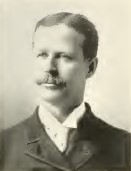 AUGUSTUS LUTHER
CROCKER is one of those active, enterprising businessmen
who have done so much to make Minneapolis what it is,
the commercial industrial and financial metropolis of
the Northwest. He comes of old New England stock which
originally emigrated to this country from England. On
both sides the family records carry back the line of
descent through a long line of honorable and useful men.
His father, Thomas Crocker, was a man of considerable
property, whose place of business was at Paris, Oxford
County, Maine. His mother’s maiden name was Almira
Davis, whose family was also prominent in the annals of
New England. AUGUSTUS LUTHER
CROCKER is one of those active, enterprising businessmen
who have done so much to make Minneapolis what it is,
the commercial industrial and financial metropolis of
the Northwest. He comes of old New England stock which
originally emigrated to this country from England. On
both sides the family records carry back the line of
descent through a long line of honorable and useful men.
His father, Thomas Crocker, was a man of considerable
property, whose place of business was at Paris, Oxford
County, Maine. His mother’s maiden name was Almira
Davis, whose family was also prominent in the annals of
New England.
Augustus Luther was born at Paris,
Maine, May 4, 1850. He attended the public schools of
his native town and also at Paris Hill academy, where he
prepared for Bowdoin College.
He received the degree of A. M. from that
institution in 1873, and also took a post-graduate
course in mechanical engineering. After taking his
engineering degree, he went to Europe in 1875 to pursue
his engineering studies and for the advantages of
travel. He traveled extensively on the Continent until
1877 when he returned to America and was for three years
interested in the construction and management of open
hearth and Bessemer steel works at Springfield,
Illinois, and also at St. Louis.
In
the fall of 1880 he came to Minnesota and located at
Minneapolis, where he engaged in business in the
manufacturing and machinery line. Subsequently he went
into the real estate and investment business. Mr.
Crocker possesses an active mind and is a man of great
energy and industry. He takes an active interest in
whatever makes for the benefit of the city at large, and
has attained a leading position among the enterprising
and public-spirited citizens of the city. It was at his
suggestion and largely through his efforts that the
Business Men’s Union was organized in 1890, of which
organization he was the first secretary. In 1893 he took
an active part in the reorganization of the Board of
Trade and was elected as its president. In January,
1895, the Northwest Business Federation was organized
and Mr. Crocker was elected president, representing the
Minneapolis Board of Trade, Among other important
matters of public interest to which he has given a great
deal of attention is the development of deep Waterways
and the project of connecting the great lakes with the
Atlantic ocean by ship canal.
Mr.
Crocker was sent to the Toronto convention as a
representative of the Board of Trade in 1894, and was
there chosen chairman of the executive committee.
He has made a special study of the subject of
deep waterways and inland navigation, and prior to the
Cleveland convention of 1895 carried on an active
campaign among the representatives of the Northwestern
and New England states in Congress, enlisting their
interest in the project and pledging them to the support
of legislation favorable to the construction and
maintenance of deep waterways between the lakes and from
the lakes to the Atlantic Coast. The success of the
Cleveland convention in 1895 was largely due to his
efforts in this respect and in recognition of his
services he was continued in the responsible position of
chairman of the executive committee. Mr.
Crocker has also taken a deep interest in the
cause of good city government and represented the Board
of Trade in the municipal reform convention al
Philadelphia in 1894, which organized the National
Municipal Reform League, and also represented the same
body in the national municipal reform convention in
Minneapolis in December of the same year. He is a member
of the executive committee of the National Municipal
League, and a life member of the American Institute of
Mining Engineers, and is a member of the Minneapolis
Library Board.
Mr.
Crocker is a member of the Presbyterian Church, where
the same activity which he manifests in business affairs
is enlisted in the cause of religion and good morals. He
was married January 3, 1883, to Clara Peabody. They have
three children, Ruth, Catharine and
Thomas.
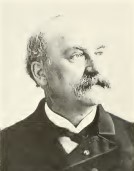 JUDSON NEWELL
CROSS was born January 16, 1838 at Pogueland, Jefferson
County New York. on a farm bought by his grandfather
Theodore Cross, in 1818, of Le Ray de Chaumont, the
agent of Joseph Bonaparte, whose American estate was in
that region. Judson was the son of Rev. Gorham Cross,
who was called the father of Congregationalism in
Northern New York and of Sophia Murdock (Cross). On his
father’s side he is descended from a long line of sturdy
New England men the family being readily traceable back
to 1640 when the first member, by the name of Cross,
settled on the Merrimac river, near Lawrence,
Massachusetts. The old Cross homestead still belongs to,
and is occupied by a member of the family. Among the
members of the Cross family were several Revolutionary
soldiers. Judson’s mother belonged to the Murdock
family, of Townsend, Vermont. Her grand-fathers were
Revolutionary soldiers and among her relatives were John
Reed, of Boston, said to have been the greatest lawyer
that America produced before the Revolutionary war, and
Rev. Hollis Reed, of
Townsend, Vermont, who was the first missionary to
India, first translated the bible into the Indian
language, and who wrote “India and Its People,” “God in
History,” etc. JUDSON NEWELL
CROSS was born January 16, 1838 at Pogueland, Jefferson
County New York. on a farm bought by his grandfather
Theodore Cross, in 1818, of Le Ray de Chaumont, the
agent of Joseph Bonaparte, whose American estate was in
that region. Judson was the son of Rev. Gorham Cross,
who was called the father of Congregationalism in
Northern New York and of Sophia Murdock (Cross). On his
father’s side he is descended from a long line of sturdy
New England men the family being readily traceable back
to 1640 when the first member, by the name of Cross,
settled on the Merrimac river, near Lawrence,
Massachusetts. The old Cross homestead still belongs to,
and is occupied by a member of the family. Among the
members of the Cross family were several Revolutionary
soldiers. Judson’s mother belonged to the Murdock
family, of Townsend, Vermont. Her grand-fathers were
Revolutionary soldiers and among her relatives were John
Reed, of Boston, said to have been the greatest lawyer
that America produced before the Revolutionary war, and
Rev. Hollis Reed, of
Townsend, Vermont, who was the first missionary to
India, first translated the bible into the Indian
language, and who wrote “India and Its People,” “God in
History,” etc.
In
1855, January 16, the day he was seventeen years old,
Judson left home for Oberlin, Ohio.
He remained at Oberlin College till the fall of
that year, when, on account of limited means, he went to
Boonville, New York, to work in a store for his uncle.
In the fall of 1856 he taught school near Sandusky,
Ohio, re-turning to Oberlin the following spring to
continue his studies, and pursued this course of
studying in the summer at Oberlin and teaching in the
winter at various places until he enlisted as a soldier
in April, 1861.
When the news of the fall of Fort
Sumter came, Professor and State Senator Munroe went
from Columbus to Oberlin to enlist a company. A large
church was crowded Saturday night, April 20, 1861, and
at the end of an inspiring speech. Prof. Munroe called
for volunteers. Young Cross tried to get to the pulpit
first, but the crowd in the aisle was so great that he
was forced to be second on the roll. Company C of the
Seventh Ohio Infantry was immediately filled, and Cross
was made first lieutenant. The regiment went with
McClellan into West Virginia and Cross served through
the West Virginia campaign of 1861 under McClellan,
Rosencranz, Cox and Tyler. At the battle of Cross Lanes
August 26, 1861 he was severely wounded in the arm. He
was taken prisoner, but was recaptured and sent home for
surgical treatment. He was promoted to the rank of
Captain of Company K. Seventh Ohio Infantry, November
25, 1861, served as a recruiting officer for a time, and
rejoined his old regiment in January, 1863, but on
account of his old wound was obliged to resign. He then
began the study of law at Albany, where he remained
until June 13. 1863, when he was again commissioner
first lieutenant in the Fifth V. R. C.. promoted to the
rank of captain October 28, 1863, and in April, 1864.
was made adjutant general of the military district of
Indiana. In July 1864, he was ordered to Washington and
appointed assistant provost marshal. He served in the
same capacity at Georgetown, was appointed one of the
five captains to muster for pay eighteen thousand
returned Andersonville prisoners at Annapolis, at which
he was occupied until the end of the war.
After the war he resumed his law
studies at Columbia law School, graduating at Albany in
the spring of 1866. He then located at
Lyons, Iowa, where be practiced law for nearly ten
years. In 1873 he came to Minneapolis and formed a law
partnership with Judge Henry G. Hicks, to which firm
Frank H. Carleton was afterwards admitted, and still
later his son, Norton M. Cross. He has been connected
with much important anticipation, both for private
individuals and corporations. In 1879 he urged in the
local press the construction of the “Soo” railroad, an
idea which was afterwards carried out by General
Washburn. While City Attorney of Minneapolis in 1884 he
framed the patrol limits ordinance and defended the same
before the supreme court. He also inaugurated the
litigation which resulted in the lowering of the
railroad tracks on fourth avenue North. Mr.
Cross has always been a Republican. He was
elected mayor of Lyons, Iowa, in 1871, and in 1883 city
attorney of Minneapolis, and held the office until 1887.
He was a member of the first park commission of
Minneapolis, and in 1891 was appointed United States
Immigration Commissioner to Europe. Captain Cross is a
member of the George N. Morgan Post, G. A. R., of the
Loyal Legion, the Loyal League, Commercial Club and of
Plymouth Congregational church.
He was married at Oberlin, Ohio, September 11,
1862, to Clara Steele Norton, of Pontiac, Michigan, a
descendant of John Steele, first official of
Connecticut. They have four children living, Kate Bird,
wife of United States Engineer Francis C. Shenehon, at
Sault Ste. Marie; Norton Murdock, Nellie Malura, wife of
Theodore MacFarlane Knappen, and Clara Amelia.
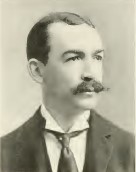 ANSON BAILEY CUTTS General
Ticket and Passenger Agent of the Minneapolis & St.
Louis Railroad, is a Southern man by birth, his father
Addison. D. Cutts, being a physician by profession, a
graduate of the University of Virginia, and Wake Forest
college, North Carolina. He gave up the practice of
medicine, however, soon after graduation, to engage in
commercial pursuits. He was engaged chiefly in the
manufacture of naval stores in North Carolina and
Georgia. On the outbreak of the civil war he entered the
Confederate Army and served three years, attaining the
rank of senior captain. His wife was Deborah A. Bailey.
The family is of Scotch-American stock. ANSON BAILEY CUTTS General
Ticket and Passenger Agent of the Minneapolis & St.
Louis Railroad, is a Southern man by birth, his father
Addison. D. Cutts, being a physician by profession, a
graduate of the University of Virginia, and Wake Forest
college, North Carolina. He gave up the practice of
medicine, however, soon after graduation, to engage in
commercial pursuits. He was engaged chiefly in the
manufacture of naval stores in North Carolina and
Georgia. On the outbreak of the civil war he entered the
Confederate Army and served three years, attaining the
rank of senior captain. His wife was Deborah A. Bailey.
The family is of Scotch-American stock.
The
subject of this sketch was born at Lillington, N. C,
October 23, 1866. His early education was under the
direction of a competent governess whose unusual and
peculiar capability for developing the mind and
character of children left a deep impression upon her
pupil. Afterwards he attended
the academy in Savannah, where he prepared for the
Middle Georgia military college at Milledgeville. He
left college, however, at the end of his sophomore year
to accompany his family to Chicago, where business
changes required his father to locate. Anson was a
brilliant student and maintained a high standing in all
his classes, and during his two years in college he held
the first place.
His
first business engagement was in the capacity of
messenger in the large printing and publishing house of
Rand, McNally & Co., in Chicago, where he was
employed from June I to September 1, 1883. He then
entered the service of the Chicago & Alton railroad
as a clerk in the auditor’s office. He remained in that
office in different positions until December 12, 1887,
when an offer from the auditor of the Chicago, St. Paul,
Minneapolis & Omaha Railway, in St. Paul, induced
him to remove to that city. He remained in the employ of
that company until September 1, 1890, when a better
position was offered him as chief rate clerk in the
passenger department of the Great Northern Railway. He
continued in that position until March 4, 1892, when he
resigned to accept the offer of the chief clerkship in
the general ticket and passenger department of the
Minneapolis & St. Louis Railroad in Minneapolis.
January I, 1894, the general ticket and passenger agent
of that road resigned, and Mr. Cutts was appointed to
fill the vacancy with the title of acting general ticket
and passenger agent, and has since been given the full
title of his office. Mr. Cutts has been given
responsibilities beyond what are usually imposed upon
men of his years, but he has demonstrated the possession
of unusual business capacity and has won the confidence
of his employers and the respect of the business public
for his abilities in an unusual degree.
His
political opinions may be said to be inherited. Born in
the South, and a son of a Confederate soldier, he
regards himself as a Democrat, but has never taken any
active part in politics. He always votes, as every good
citizen should, and, also, as good citizens frequently
do, casts his vote independently, with a preference
rather for the man than the ticket.
He became a member of the Presbyterian church in
1886. June 5, 1895, he married Edna Browning Stokes, of
Grand Forks, N. D.
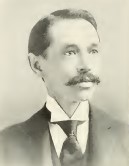 COURTLAND NAY
DICKEY clerk of the district court of the Fourth
Judicial District, for Hennepin County, was born January
1, 1855, in Jefferson County, Indiana. His father and
grandfather, who lived for many years in the Hoosier
state, trace their ancestry back to an ancient family in
the north of Ireland, a branch of which established
itself in this country almost a hundred years ago.
These first Dickeys settled in New Jersey, and
after some years went to North Carolina. Mr.
Dickey’s paternal grandfather married, in 1808,
Miss Elizabeth Stark, a near relative of the hero of the
battle of Bennington, and located with his wife in what
was afterwards Scott Comity, Indiana, but then a wild
frontier country. The elder Dickey assisted in the
organization of Scott County, and here his son, the
father of the subject of this sketch, was born. This son
became a lawyer, but before he was twenty-four years of
age was elected county auditor. Locating in Jefferson
County, he served as postmaster for nine years, and then
became successively deputy auditor and recorder. He was
serving his second term in the latter office at the time
of his death in 1874. COURTLAND NAY
DICKEY clerk of the district court of the Fourth
Judicial District, for Hennepin County, was born January
1, 1855, in Jefferson County, Indiana. His father and
grandfather, who lived for many years in the Hoosier
state, trace their ancestry back to an ancient family in
the north of Ireland, a branch of which established
itself in this country almost a hundred years ago.
These first Dickeys settled in New Jersey, and
after some years went to North Carolina. Mr.
Dickey’s paternal grandfather married, in 1808,
Miss Elizabeth Stark, a near relative of the hero of the
battle of Bennington, and located with his wife in what
was afterwards Scott Comity, Indiana, but then a wild
frontier country. The elder Dickey assisted in the
organization of Scott County, and here his son, the
father of the subject of this sketch, was born. This son
became a lawyer, but before he was twenty-four years of
age was elected county auditor. Locating in Jefferson
County, he served as postmaster for nine years, and then
became successively deputy auditor and recorder. He was
serving his second term in the latter office at the time
of his death in 1874.
Mr. Dickey was the fourth
of a family of five children.
The first ten years of his life were passed on
his father’s farm. When the family moved to the town of
Madison, in Jefferson County, he began to go to school,
and to cultivate what he was not long in finding out was
a decided taste for music.
This musical talent helped him to earn his first
dollar. In 1878, at the age of twenty-two, he went to
California on account of ill health, remaining in that
state until 1883, when he came to Minneapolis, which
city has since been his home. Mr.
Dickey’s first employment after coming to
Minneapolis was as a copyist in the office of the clerk
of the district court, a position which he secured in
competitive examination with eighty-four other
applicants. During the terms of E. J. Davenport and
Captain Terrell he was deputy clerk, and in 1882 he was
elected clerk. In 1896 he was reelected.
In the year 1901, when his second term will end,
Mr. Dickey will have been in the clerk’s office of
Hennepin County in one capacity or other for eighteen
years. He is one of the most efficient men who ever
filled the office of clerk of the district Court in the
state, All of his political honors have been received at
the hands of the Republican party and to this party he
has always belonged. The earlier members of
the family were Whigs or Republicans without an
exception. He is a Royal Arch Mason, a member of the B.
P.O. E., and of the Improved Order of Red Men. His
family is identified with the Universalist church, but
he belongs to no religious
organization.
 WILLIS EDWARD
DODGE is of English descent, his ancestors having come
over to this country from England in 1670. Three
brothers came together, and their descendants took an
active part in the Revolution, in which they were known
as “the Manchester men.” Andrew Jackson Dodge,
grandfather of Willis Edward, settled in Montpelier,
Vermont, in 1812. WILLIS EDWARD
DODGE is of English descent, his ancestors having come
over to this country from England in 1670. Three
brothers came together, and their descendants took an
active part in the Revolution, in which they were known
as “the Manchester men.” Andrew Jackson Dodge,
grandfather of Willis Edward, settled in Montpelier,
Vermont, in 1812.
The
subject of this sketch was born at Lowell, Vermont May
11, 1857, the son of William Baxter Dodge and Harriett
Baldwin (Dodge). William B. Dodge was a farmer in
ordinary circumstances. Willis Edward began his
education in the public schools of Vermont, and
continued it in St. Johnsbury Academy,
where he took the classical course preparatory for
Dartmouth College. He did not, however, take a college
course, but began the study of law with Hon. W. W.
Grout, a member of congress from the Second Vermont
district, and also read law with Hon. F. W. Baldwin, of
Barton, Vermont, in 1879 and 1880. He was admitted to
the Orleans County, Vermont bar in September, 1880.
In
October of that year he came West in search of better
opportunities for a young man of his ambitions and
capacity, and settled at Fargo, North Dakota.
Subsequently he removed to Jamestown, North Dakota,
where he was appointed attorney for the Northern Pacific
Railroad, and held that office until July, 1887.
He was then appointed attorney for the St. Paul,
Minneapolis & Manitoba Railway Company for Dakota,
and returned to Fargo, where he lived until August,
1892.
At
that time he removed to Minneapolis, where he continued
to act as attorney for the Great Northern Railway
Company, formerly the St. Paul, Minneapolis &
Manitoba Railway Company. He is also at the present time
attorney for the Minneapolis Trust Company, and other
corporations. He has made a specialty of corporation
law, and has obtained distinction in that department of
legal practice. Mr. Dodge has always
been a Republican, and while a resident of Dakota was
made a member of the state senate in 1886 and 1887.
During his residence in Jamestown he served that city as
its corporation counsel for eight years. He is a member
of the Knights of the Red Cross and the Minneapolis
Club. He claims no church membership.
On
March 27, 1882. he married Hattie M. Crist of Vinton,
Iowa. They have two children.
Dora Mae, age twelve, and William E., age
ten.
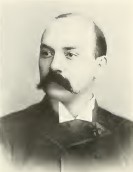 FREDERICK A.
DUNSMOOR is an eminent physician, surgeon and
gynecologist practicing his profession at Minneapolis.
Dr. Dunsmoor is a native of Minnesota, and was born May
28, 1853, at Richfield, in Hennepin County, the son of
James A. and Almira Mosher Dunsmoor. His parents were
natives of Maine, and came to Hennepin County,
Minnesota, in 1852. Frederick Alanson received his
education in the public schools of Richfield,
Minneapolis and at the University of Minnesota.
His professional training began in the office of
Doctors Goodrich and Kimball, of Minneapolis, and was
continued in the Bellevue Hospital Medical College, New
York city, where he received the degree of M. D. in
March, 1875. He also received private instruction from
Doctors Frank H. Hamilton, Alfred G. Loomis, Austin
Flint, Sr., E. G. Janeway and R. Ogden
Doremus. He began his practice at Minneapolis in
partnership with Dr. H. H. Kimball, and was
associated with him one year. Dr. Dunsmoor has been
active in hospital work, having assisted in the
establishment of the Minnesota College Hospital in 1881,
and serving as vice president and dean of the medical
college, professor of surgery and attending surgeon to
the hospital and dispensary for eight years. In 1889 the
Hospital College, in conjunction with other schools of
medicine in St. Paul and Minneapolis, was reorganized in
the medical department of the University of Minnesota. FREDERICK A.
DUNSMOOR is an eminent physician, surgeon and
gynecologist practicing his profession at Minneapolis.
Dr. Dunsmoor is a native of Minnesota, and was born May
28, 1853, at Richfield, in Hennepin County, the son of
James A. and Almira Mosher Dunsmoor. His parents were
natives of Maine, and came to Hennepin County,
Minnesota, in 1852. Frederick Alanson received his
education in the public schools of Richfield,
Minneapolis and at the University of Minnesota.
His professional training began in the office of
Doctors Goodrich and Kimball, of Minneapolis, and was
continued in the Bellevue Hospital Medical College, New
York city, where he received the degree of M. D. in
March, 1875. He also received private instruction from
Doctors Frank H. Hamilton, Alfred G. Loomis, Austin
Flint, Sr., E. G. Janeway and R. Ogden
Doremus. He began his practice at Minneapolis in
partnership with Dr. H. H. Kimball, and was
associated with him one year. Dr. Dunsmoor has been
active in hospital work, having assisted in the
establishment of the Minnesota College Hospital in 1881,
and serving as vice president and dean of the medical
college, professor of surgery and attending surgeon to
the hospital and dispensary for eight years. In 1889 the
Hospital College, in conjunction with other schools of
medicine in St. Paul and Minneapolis, was reorganized in
the medical department of the University of Minnesota.
Dr. Dunsmoor served as
professor of surgery in the St. Paul medical college in
1877 and till 1879, in the medical department of Hamline
University 1879 to 1881, Minneapolis Hospital College
from 1881 to 1888, and in the medical department of the
University since its organization. He was county
physician for Hennepin County during 1879. He was also
active in organizing Asbury Methodist Hospital, which
was opened September 1, 1892, and which became the chief
clinical field for the medical department of the
University and of the College of Physicians and Surgeons
of Minneapolis. Dr. Dunsmoor has also been in active
service as surgeon to St. Mary’s Hospital since 1890, to
St. Barnabas Hospital since 1879, gynecologist to the
City Hospital since 1894, to the Asbury Hospital since
1892, to the State Free Dispensary since 1889, and to
the Asbury Free Dispensary since 1889. He has devoted
his attention to surgery and gynecology, operating every
morning, and enjoys a wide reputation as a skillful and
successful operator. For many years his
services have been in demand by the railway, milling,
accident and insurance companies.
Dr.
Dunsmoor is a member of a number of professional and
scientific societies, among them the International
Medical Congress, the North Dakota State Medical
Society, The American Medical Association, the National
Association of Railway Surgeons, the Minnesota Academy
of Medicine, the Minnesota State Medical Association,
the Hennepin County Medical Society and the Society of
Physicians and Surgeons of Minneapolis. His membership
in social and beneficiary societies includes the Nu
Sigma Nu Society, the Masonic order, the Good Templars,
the Druids, the Minneapolis Club and the Commercial and
Athletic Club of the latter two he was a charter member.
He is also an active member of the Hennepin Avenue
Methodist church, where he has served for years in an
official capacity. He is a diligent student of the
science of medicine and surgery, and spends a portion of
each winter in medical study in some of the great
scientific centers, and enjoys the acquaintance of and
professional association with the most famous surgeons
in the country.
He
is a contributor to different medical and surgical
journals, and is recognized as authority in his
particular branch of the practice. He is a man of genial
manners and happy temperament, and an enthusiastic
patron of music and the fine arts.
Dr. Dunsmoor was married September 5, 1876, to
Miss Elizabeth Emma Billings, daughter of the late
Surgeon George E. Turner, U. S. A.
They have three children living, Marjorie
Allport, Elizabeth Turner and Frederick Laton.
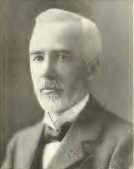 WILLIAM HOOD
DUNWOODY, who has long been identified with the flour
milling interests of Minneapolis, is a native of
Pennsylvania. He was born in Chester County, on March
14, 1841. His father was James Dunwoody, whose father,
grandfather and great grandfather lived in the same
vicinity in Chester County and were all engaged in
agricultural pursuits. The family is of Scotch ancestry.
Mr. Dunwoody’s mother was Hannah Hood, the daughter of
William Hood, of Delaware County, Pennsylvania, whose
ancestors came to this country when William Penn founded
the colony which took his name. WILLIAM HOOD
DUNWOODY, who has long been identified with the flour
milling interests of Minneapolis, is a native of
Pennsylvania. He was born in Chester County, on March
14, 1841. His father was James Dunwoody, whose father,
grandfather and great grandfather lived in the same
vicinity in Chester County and were all engaged in
agricultural pursuits. The family is of Scotch ancestry.
Mr. Dunwoody’s mother was Hannah Hood, the daughter of
William Hood, of Delaware County, Pennsylvania, whose
ancestors came to this country when William Penn founded
the colony which took his name.
Mr.
Dunwoody’s early life was passed upon the farm where he
was born. After a period of schooling in Philadelphia,
he at the age of eighteen, entered his uncle’s store in
Philadelphia, and commenced what proved to be the
business of his life. His uncle was a grain and flour
merchant. After a few years Mr. Dunwoody commenced
business for himself as a senior member of the firm of
Dunwoody & Robertson. After ten years of practical
experience in Philadelphia flour markets, Mr. Dunwoody
came to Minneapolis in 1869, and, for a time,
represented several eastern houses as flour buyer.
Milling at Minneapolis was then in a state of
transition. It was the time when the old fashioned mill
stones were giving place to the modern steel rollers and
the middlings purifier.
With keen perception Mr. Dunwoody
saw that a great advance in the milling business was at
hand, and in 1871 he embarked in milling as a member of
the firm of Tiffany, Dunwoody & Co. He was also a
member of the firm of H. Darrow & Co., and
the business of both concerns was under his personal
management. Early in his career as
a Minneapolis miller Mr. Dunwoody distinguished
himself among his associates by devising and organizing
the Minneapolis Millers” Association, which was for a
long time a most important organization, its object
being co-operation in the purchase of wheat throughout
the northwest country. It had an important part in the
building up of the Minneapolis milling business. Its
work was discontinued when the general establishment of
elevators and the development of the Minneapolis wheat
market made it no longer necessary for the millers to
work in co-operation in buying their wheat.
Another important work which Mr.
Dunwoody early attempted was that of arranging for the
direct exportation of flour. It had been the custom to
sell through brokers and middle men of the Atlantic sea
ports. In 1877 Mr. Dunwoody went to England and, though
he met with a most determined opposition, succeeded in
arranging for the direct export of flour from
Minneapolis, a custom which has since continued without
interruption. Shortly after the
great mill explosion of 1878 Governor C. C. Washburn
induced Mr. Dunwoody to join him in a milling
partnership with the late John Crosby, and Charles J.
Martin. The firm thus formed,
Washburn, Crosby & Co., continued for many years and
was succeeded by the Washburn, Crosby Co., a few years
since. Since Mr. Dunwoody’s connection with the Washburn
mills in 1871) he has been unintermittedly identified
with the conduct of this famous group of mills. It was
natural that Mr. Dunwoody, as a prominent miller, should
take a large interest in the management of
elevators. He has invested
largely in elevator properties, and was one of the
organizers of the St. Anthony & Dakota Elevator
Company, the St. Anthony Elevator Company, and the
Duluth Elevator Company. In addition to these interests,
Mr. Dunwoody holds other important interests, and is
connected with a number of the strongest financial
institutions of Minneapolis.
He is a director of the Northwestern National
Bank and also of the Minneapolis Trust Company. Before
coming to Minneapolis, Mr. Dunwoody married Miss Kate L.
Patten, the daughter of John W. Patten, a prominent
merchant of Philadelphia. Their home is a handsome
dwelling on Tenth Street at the corner of Mary Place.
Mr. Dunwoody’s refined tastes have been gratified in
late years by extensive travel.
The information
on Trails to the Past © Copyright
may be used in personal family history research, with
source citation. The pages in entirety may not be
duplicated for publication in any fashion without the
permission of the owner. Commercial use of any material
on this site is not permitted. Please respect the
wishes of those who have contributed their time and
efforts to make this free site possible.~Thank
you! | | | |
